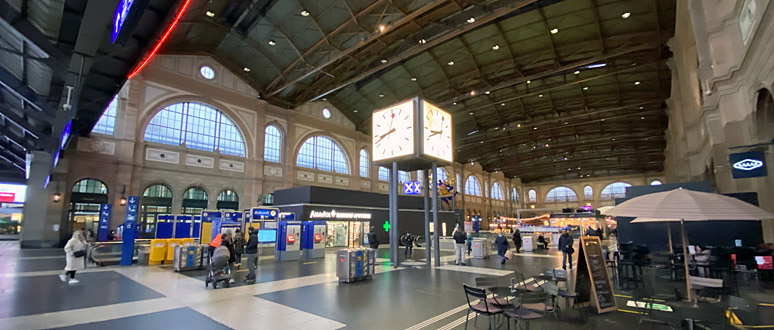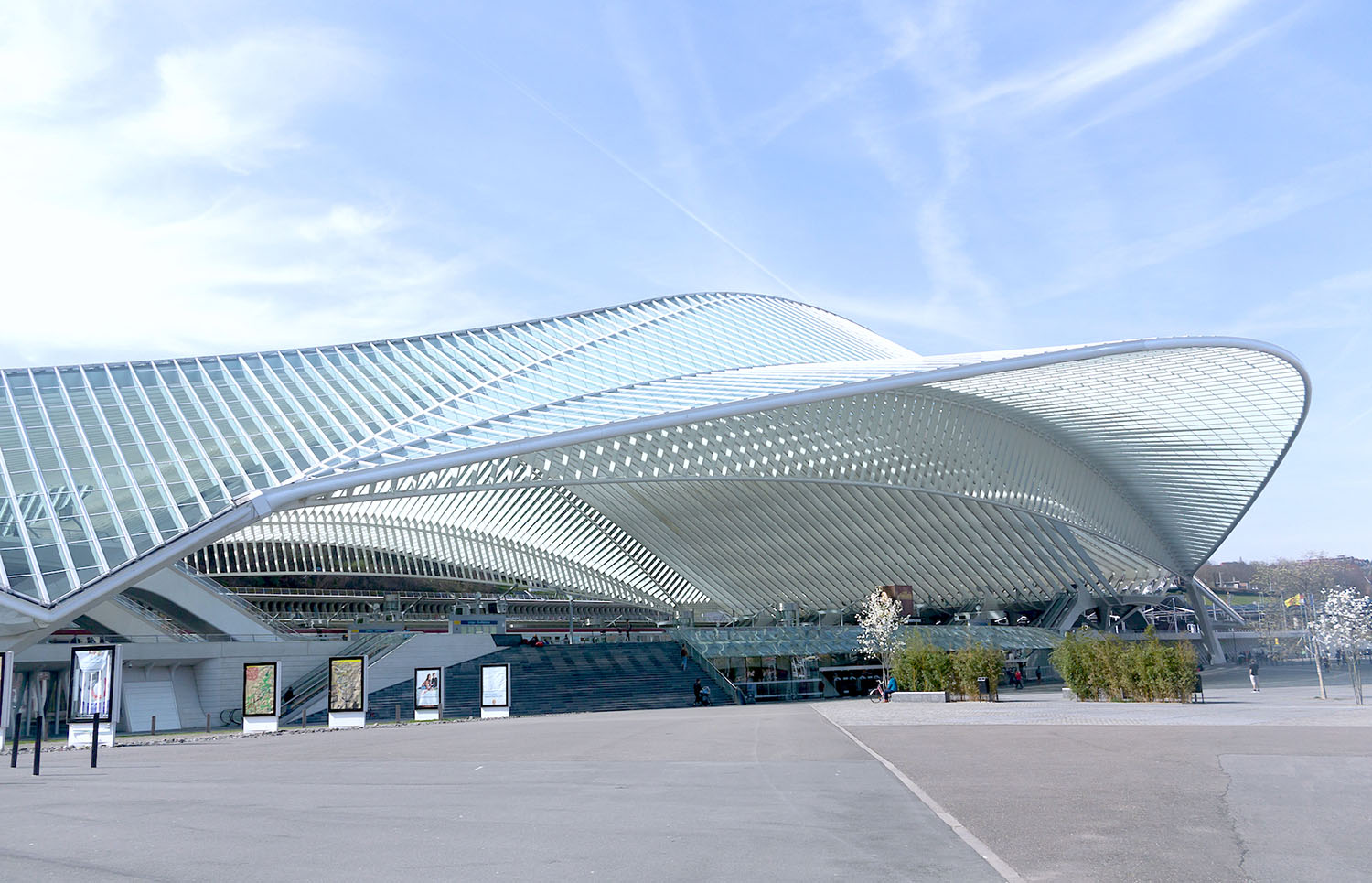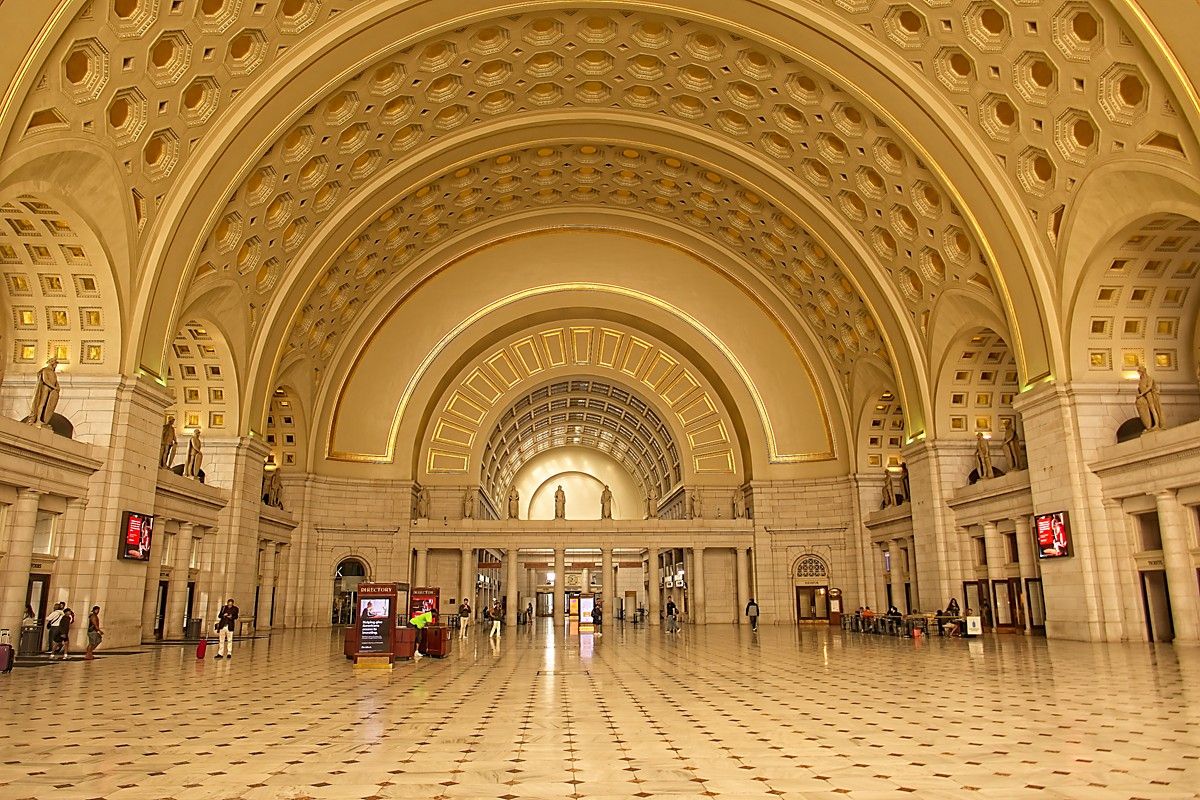Have Train Stations become Culinary Hotspots? Let's Find Out!

Traditionally, train station food has evoked images of lackluster offerings like lukewarm coffee, pre-packaged sandwiches, and vending machine snacks. These culinary choices were often a last resort for hungry travelers who prioritized convenience over quality. However, this perception is rapidly changing as train stations around the world undergo a gastronomic transformation. Increasingly, these bustling transport hubs are becoming culinary hotspots, offering diverse and high-quality food options that appeal to both locals and travelers alike.
This shift towards making train stations modern food destinations is driven by several factors. Urban development and revitalization projects have reimagined these spaces as integral parts of the city's dining landscape. Moreover, the rise of culinary tourism has made food experiences an essential aspect of travel. Travelers now eagerly anticipate exploring local flavors and unique dining options, even within transit areas. The global palate has become more adventurous, and train stations have responded by offering everything from gourmet restaurants and artisan bakeries to international street food stalls. The increasing importance of food in travel experiences cannot be overstated. A delightful meal can transform a mundane journey into a memorable adventure. For many, the culinary offerings at train stations not only provide sustenance but also enhance the overall travel experience, making it richer and more enjoyable!

Historical Context
The evolution of train station food mirrors the broader changes in travel and culinary tastes over the decades. Initially, train station food offerings were basic—simple snack bars stocked with quick, no-frills sustenance aimed at travelers on the go. These early venues offered negligible variety, catering to the primary need for convenience rather than culinary enjoyment. As rail travel became more prevalent in the late 19th and early 20th centuries, the emphasis on dining began to grow. Full-service restaurants started appearing in grand train stations, like the opulent Oyster Bar in New York City's Grand Central Terminal, which opened in 1913. These establishments provided not just meals but a social experience, allowing travelers to dine in style before embarking on their journeys.
The allure of train travel also extended to the trains themselves, with dining cars becoming a symbol of luxury and sophistication. Here, passengers could indulge in multi-course meals served with fine china and silverware, often rivaling top city restaurants in quality. Railroads like the Orient Express and the American Pullman cars set high standards, making dining an integral part of the rail experience.
/cdn.vox-cdn.com/uploads/chorus_asset/file/22802349/OYSTER_BAR_COUNTERS_BEST.jpg)
Factors Driving the Transformation
Demand for Higher-Quality, Diverse Food Options: Modern travelers expect more than just sustenance—they seek culinary experiences that make their journeys memorable. The craving for diverse, high-quality food options has prompted train stations to elevate their dining offerings, moving beyond mere quick bites to include gourmet meals and international cuisines.
Shift Towards Experiential Travel: Today’s travelers prefer experiences that enrich their journeys. They view food as a crucial component of cultural immersion and adventure. Rail travelers, in particular, are looking for dynamic, unique dining experiences that reflect the destinations they are visiting, making the food itself a part of the travel story.
Revenue Opportunities for Train Stations: Upgrading culinary options provides a significant revenue stream for train stations. By attracting food enthusiasts and boosting foot traffic, these culinary hotspots increase spending and offer a higher return on investment.

Partnerships with Renowned Chefs and Restaurateurs: Train stations have become alluring platforms for acclaimed chefs and restaurateurs. Collaborations with these culinary experts elevate the food scene, attracting food lovers and enhancing the station's prestige and profitability.
Globalization and the Fusion of Culinary Traditions: In a globalized world, travelers bring diverse culinary expectations. Train stations have adapted by offering a fusion of local and international flavors, creating a melting pot of cuisines. This not only satisfies global palates but also introduces diners to new gastronomic experiences.
Focus on Local and Sustainable Sourcing: There is a growing emphasis on sustainability and supporting local producers in the culinary world. Train stations are tapping into this trend by offering locally sourced, organic, and sustainable food options. This approach not only appeals to eco-conscious travelers but also highlights regional specialties, providing a taste of the local culture and contributing to the local economy.

Noteworthy Train Station Food Destinations
A. Grand Central Terminal, New York City: Since its opening in 1913, the Oyster Bar at Grand Central Terminal has been a landmark dining destination, offering an impressive array of fresh oysters and seafood. Beyond the Oyster Bar, the terminal hosts a variety of culinary gems, including artisanal bakeries, upscale cafes, and gourmet food markets, making it a bustling hub for food enthusiasts.
B. St Pancras International, London: St Pancras International is renowned for its architectural grandeur and has become a culinary hotspot. Hosting acclaimed restaurants like Searcys, known for its Champagne Bar, and The Betjeman Arms, offering classic British cuisine, the station seamlessly blends culinary excellence with historic elegance.

C. Tokyo Station, Japan: Tokyo Station is a haven for food lovers. With an entire area dubbed "Ramen Street," featuring top-rated ramen shops, and other sections dedicated to sushi, bento boxes, and sweets, the station takes travelers on a delectable culinary journey through Japan's diverse food culture. The station’s numerous eateries embody Japan’s meticulous approach to food, ensuring high-quality dishes that highlight seasonal and regional ingredients.
D. Gare du Nord, Paris: Gare du Nord, one of Paris's most iconic stations, offers a quintessential French culinary experience. Travelers can indulge in freshly baked croissants and artisanal pastries from renowned patisseries, or enjoy traditional French bistro fare at stylish eateries. The station reflects Paris’s culinary elegance, making it a perfect spot to savor French cuisine.
E. Zurich Hauptbahnhof, Switzerland: Zurich Hauptbahnhof is more than a transit point; it's a gourmet paradise. Known for its chocolate boutiques offering exquisite Swiss chocolates, the station also boasts an array of restaurants serving gourmet international dishes. From local Swiss specialties to global cuisines, travelers are treated to high-quality, diverse food options that make layovers and travel breaks truly pleasurable.

The Diverse Culinary Offerings
A. Street Food and Casual Dining
- Pop-up Stalls and Food Trucks Elevating Quick Bites: Train stations are increasingly featuring pop-up stalls and food trucks that serve an array of delectable street food. These options provide quick yet flavorful bites, bridging the gap between fast food and gourmet cuisine. From Korean BBQ tacos to artisanal pizzas, these stalls offer global tastes in a convenient format.
- Popular Fast-Casual Dining Options: Many train stations have adopted popular fast-casual dining concepts. Chains like Shake Shack, Chipotle, and Pret A Manger have established a presence in key train stations, providing travelers with reliable, high-quality meals that are both quick and delightful.
B. Fine Dining Experiences
- High-End Restaurants Bringing Gourmet Cuisine to Travelers: Fine dining has found its way into train stations, offering sophisticated experiences. Restaurants with exceptional service and beautifully crafted dishes are now accessible to those in transit. These establishments often rival the best city restaurants, with elegant interiors and an intimate dining ambiance.
- Stories of Michelin-Starred Chefs Opening Venues in Train Stations: Renowned chefs are transforming train station dining landscapes. Michelin-starred chefs like Alain Ducasse and Gordon Ramsay have opened venues in train stations, bringing their expertise and culinary innovation to the masses. These high-profile openings help elevate the status of train station dining and provide travelers with an exclusive taste of world-class cuisine without leaving the station.

C. Regional and Ethnic Foods
- Authentic Regional Dishes Providing a Cultural Taste: Train stations are becoming destinations for authentic regional dishes, offering travelers a chance to experience local flavors. From New Orleans' po'boys at New York's Penn Station to Italian pasta at Rome's Termini, these authentic offerings provide a cultural and culinary journey that goes beyond mere sustenance.
- Ethnic Eateries Offering Global Flavors: Train stations are incorporating diverse ethnic eateries that reflect the multicultural tapestry of their cities. Whether it's a sushi bar in Tokyo Station or a taqueria in Los Angeles Union Station, these establishments bring global flavors straight to travelers' plates, allowing them to palate-hop without ever leaving the station.
The Role of Design and Ambiance
Architectural Revamps: Many train stations have undergone comprehensive renovations to create dedicated dining zones. These transformations often involve upgrading facilities to include state-of-the-art kitchens and aesthetically pleasing dining areas, ensuring both functionality and atmosphere are top-notch. Architectural revamps frequently blend historical and modern elements, preserving the heritage of the train station while incorporating contemporary design. This fusion enhances the overall dining experience, providing a visually stimulating environment that respects the station's history.
Creating an Inviting Atmosphere: Modern train stations feature comfortable seating and communal dining spaces that encourage social interaction. These areas are designed to be welcoming, allowing travelers to relax and enjoy their meals even in transit. Thoughtful use of lighting, decor, and ambient music plays a significant role in creating an inviting atmosphere. Soft lighting and tasteful decor create a cozy environment, while ambient music adds to the overall dining experience, making train station eateries more than just a stopover—they become destinations in their own right. These elements collectively enhance the ambiance, turning a quick meal into a memorable part of the travel journey.

Culinary Events and Markets
Many train stations now host seasonal food festivals that celebrate local and seasonal produce. These events introduce travelers to regional specialties and fresh, high-quality ingredients, offering a taste of the locale’s agricultural bounty. These festivals often feature collaborations with celebrity chefs and local artisans, who conduct live demonstrations, tastings, and workshops. Such collaborations enhance the festival's appeal, drawing food enthusiasts and making the station a culinary destination.
Weekly farmers’ markets within train stations are becoming popular, providing travelers with easy access to fresh produce, homemade baked goods, and artisanal products. These markets are a convenient way for on-the-go shoppers to purchase quality items. By hosting these markets, train stations support local farmers and small businesses. This not only boosts the local economy but also fosters a sense of community and sustainability, aligning with contemporary values of responsible consumption.

Impact on Local Economies and Communities
Train stations are forging partnerships with local restaurants and food vendors, providing them a platform to reach a larger audience. This collaboration enhances the visibility and revenue of local businesses, contributing to the area's economic vitality. These stations offer invaluable opportunities for local chefs and culinary entrepreneurs to showcase their talent. By providing prime retail space and foot traffic, train stations help burgeoning culinary professionals grow their brands and businesses.
Modern train stations are evolving into vibrant community hubs that extend beyond transportation. With communal dining areas, cultural events, and public performances, they become dynamic gathering spaces that foster community engagement. Many train stations are involved in social impact initiatives and culinary programs such as food drives, cooking classes, and sustainability workshops. These initiatives not only serve the community but also promote a culture of inclusivity and social responsibility. This multifaceted impact strengthens local economies and fosters a sense of community, making train stations pivotal in urban and social development by transforming them into more than just transit points—they become integral parts of the community fabric, where local culture, commerce, and community life intersect dynamically.

Future Trends in Train Station Dining
Emphasis on Reducing Food Waste and Using Eco-Friendly Materials: The future of train station dining will prioritize sustainability. Restaurants and food vendors will adopt practices to minimize food waste, such as donating surplus food and utilizing composting systems. Additionally, there will be a shift towards using biodegradable packaging and eco-friendly materials to reduce environmental impact.
Growth of Plant-Based and Alternative Protein Options: In response to evolving consumer preferences, train station eateries will increasingly offer plant-based and alternative protein options. These sustainable and health-conscious choices cater to a growing demographic of vegetarians, vegans, and those looking to reduce their meat consumption for environmental reasons.
Integration of Food Delivery Apps and Smart Ordering Systems: Technology will play a pivotal role in enhancing the convenience and efficiency of train station dining. The integration of food delivery apps and smart ordering systems will allow travelers to pre-order meals for pick-up or delivery directly to their seats, minimizing wait times and streamlining the dining experience.

Use of Virtual Kitchens and Digital Menus: The introduction of virtual kitchens and digital menus will facilitate a broader and more flexible range of food offerings. These innovations allow multiple brands to operate from a single kitchen space, diversifying the culinary options available to travelers without requiring extensive physical infrastructure. Digital menus provide real-time updates and customization options, enhancing the user experience.
Tailoring Culinary Options to Individual Dietary Needs and Preferences: Future dining offerings will become increasingly personalized. Train stations will utilize data analytics and customer feedback to tailor culinary options to individual dietary needs and preferences, ensuring a satisfying experience for everyone—from gluten-free and keto dieters to those with specific allergies.
Exclusive Dining Clubs and Membership Perks: To create loyal customers and enhance the dining experience, train stations may introduce exclusive dining clubs and membership perks. These might include discounts, priority seating, special menus, and access to members-only lounges, offering a premium and personalized travel food experience.

Train stations have evolved from mere transit points offering basic sustenance to vibrant culinary destinations that enrich the travel experience. This transformation has been fueled by changing traveler expectations, economic opportunities, cultural influences, and innovative design. In essence, the future of train station dining is bright, with the power to transform mundane commutes into memorable culinary journeys. By continuing to adapt and innovate, train stations can become integral parts of a holistic and enjoyable travel experience, making every trip a gastronomic adventure!
